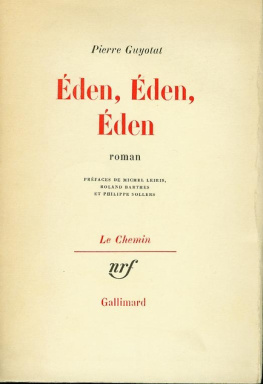Tahiti
The Marriage of Loti
Set in Tahiti in 1872, this is an autobiographical novel that tells of the love affair between a beautiful island girl and the French naval officer who wrote under the name of Pierre Loti.
Pierre Loti, perhaps the worlds most prolific, romantic and exotic travel writer and novelist, was born as Julien Marie Viaud in Rochefort in Western France in 1850. A childhood fascination with exotic lands across the seas led him to embark on a naval career that enabled him to seek love and adventure in many latitudes. He drew on these real life experiences when writing the romantic novels and travel books that made him one of the most popular authors of his day. Although his prolific output brought him both fame and fortune he remained a romantic escapist and never gave up his beloved naval career. He retired from the French navy in 1910 and died in 1923.
The Pierre Loti Library
Siam
Aziyad
Egypt
Japan
Madame Chrysanthemum
Morocco
India
Japan and Corea
The Sahara to Senegal
Jerusalem and the Holy Land
Tahiti
The Marriage of Loti
The Iceland Fisherman
A Tale of the Pyrenees
A Tale of Brittany
Pierre Loti: Romance of A Great Writer
Edward B. DAuvergne
First published in 2002 by
Kegan Paul Limited
This edition first published in 2011 by
Routledge
2 Park Square, Milton Park, Abingdon, Oxon, OX14 4RN
Simultaneously published in the USA and Canada
by Routledge
711 Third Avenue, New York, NY 10017
Routledge is an imprint of the Taylor & Francis Group, an informa business
Kegan paul 2002
All rights reserved. No part of this book may be reprinted or reproduced or utilised in any form or by any electronic, mechanical, or other means, now known or hereafter invented, including photocopying and recording, or in any information storage or retrieval system, without permission in writing from the publishers.
British Library Cataloguing in Publication Data
A catalogue record for this book is available from the British Library
ISBN 10: 0-7103-0821-3 (hbk)
ISBN 13: 9780-7103-0821-4 (hbk)
Publishers Note
The publisher has gone to great lengths to ensure the quality of this reprint but points out that some imperfections in the original copies may be apparent. The publisher has made every effort to contact original copyright holders and would welcome correspondence from those they have been unable to trace.
Introduction
The Marriage of Loti a tale of amorous dalliance set in Tahiti is the exotic romance par excellence, one of the finest examples of that literary genre that enjoyed its European heyday between 1880 and 1914. These years saw the expansion of European colonial possessions abroad on an unprecedented scale, a development that was reflected in the emergence of a new kind of literature devoted to the colonial experience, and to life in all foreign lands beyond the seas. There were colonial adventures, travel books, military novels and memoirs, but the most popular form by far was the exotic romance, whose leading exponent was the French naval officer who wrote under the name Pierre Loti.
Lotis romances were a world away from the pallid pastiches in pasteboard settings favoured by his many imitators. Lotis forte was lyrical descriptive writing, and he also possessed an intimate knowledge of exotic people and places drawn from personal experience gained during naval service. The formula or his plots never varied, being composed of four basic elements; the action is set in a colourful foreign country, the lovers are a Western man and a woman native to the place, their affair is not conducted along Western lines but proceeds according to the customs of the country, and their relationship is temporary. In Lotis hands these simple elements were elaborated into compelling portrayals of the colonies as places where exciting adventures, exotic customs and erotic interludes were all to be found and enjoyed. Through the immense popularity of The Marriage of Loti and his other romances among them Madame Chrysanthemum, the book that inspired Puccinis opera Madame Butterfly Loti was responsible for establishing a romantic view of the colonies and the colonial experience in the mind of the public.
The Marriage of Loti was the romance that first won Loti a wide and enthusiastic following, and it contains some of the finest evocations of Polynesian settings ever written. Certainly Loti captures, as no other writer has, that atmosphere of melancholythe dreamlike sense of isolation, of haunting sadness that is familiar even today to all those who know the Pacific islands well. It is a work of the senses rather than of the intellect, a kind of literary impressionism that invites comparison with the paintings of Paul Gauguin, whose interest in the Pacific was fired by the book. In their separate ways, author and artist were responsible for fixing the romantic Polynesian idyll in the public imagination for all time. But while Gauguins work is a vivid celebration and positive affirmation of the island way of life, The Marriage of Loti is of another complexion entirely, for it reveals the destructive aspect of the idyll and the dark side of the dream.
Julien-Marie Viaud, who later took the name Pierre Loti, was born in Rochefort in Western France in 1850. From earliest childhood, he was irresistably attracted to exotic lands. As he recalled;
Oh! What magic and mental turmoil there was during my childhood in the simple word the colonies, which, at that time, denoted in my mind every far-off tropical land with its palm trees, enormous flowers, Negroes, animals and adventures Oh, the colonies! How can I describe everything that stirred in my head at the very sound of that word!
Polynesia and Tahiti in particular exerted a special fascination on the boy, inspired by the experiences of his older brother Gustave, a naval surgeon, who had been stationed in Tahiti for two years and had enjoyed a liaison with a Tahitian woman. Gustave died on service in Indochina when julien was fifteen, but his Tahitian tales were not forgotten. Julien entered the French
When the Flore arrived off Papeete on January 29, 1872, Julien found that the islands were a very different place to that earthly paradise described by the French explorer Bougainville a century before. Congregationalist missionaries sent by the London Missionary Society had arrived in the islands in 1797, and within a few years had succeeded in destroying much of the traditional Tahitian way of life. Under their influence, observance of the great annual festivals was abandoned, the dancing of the












